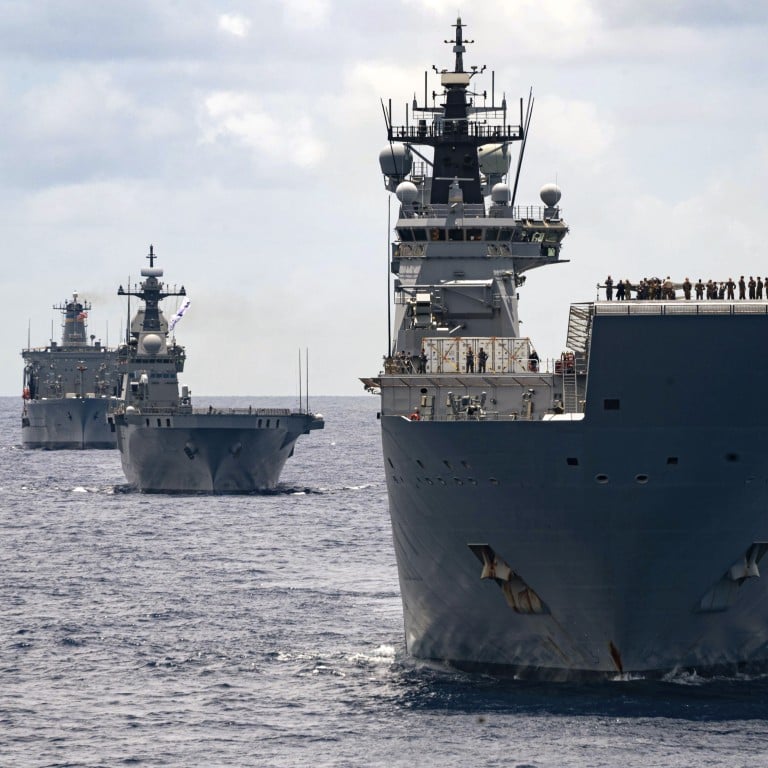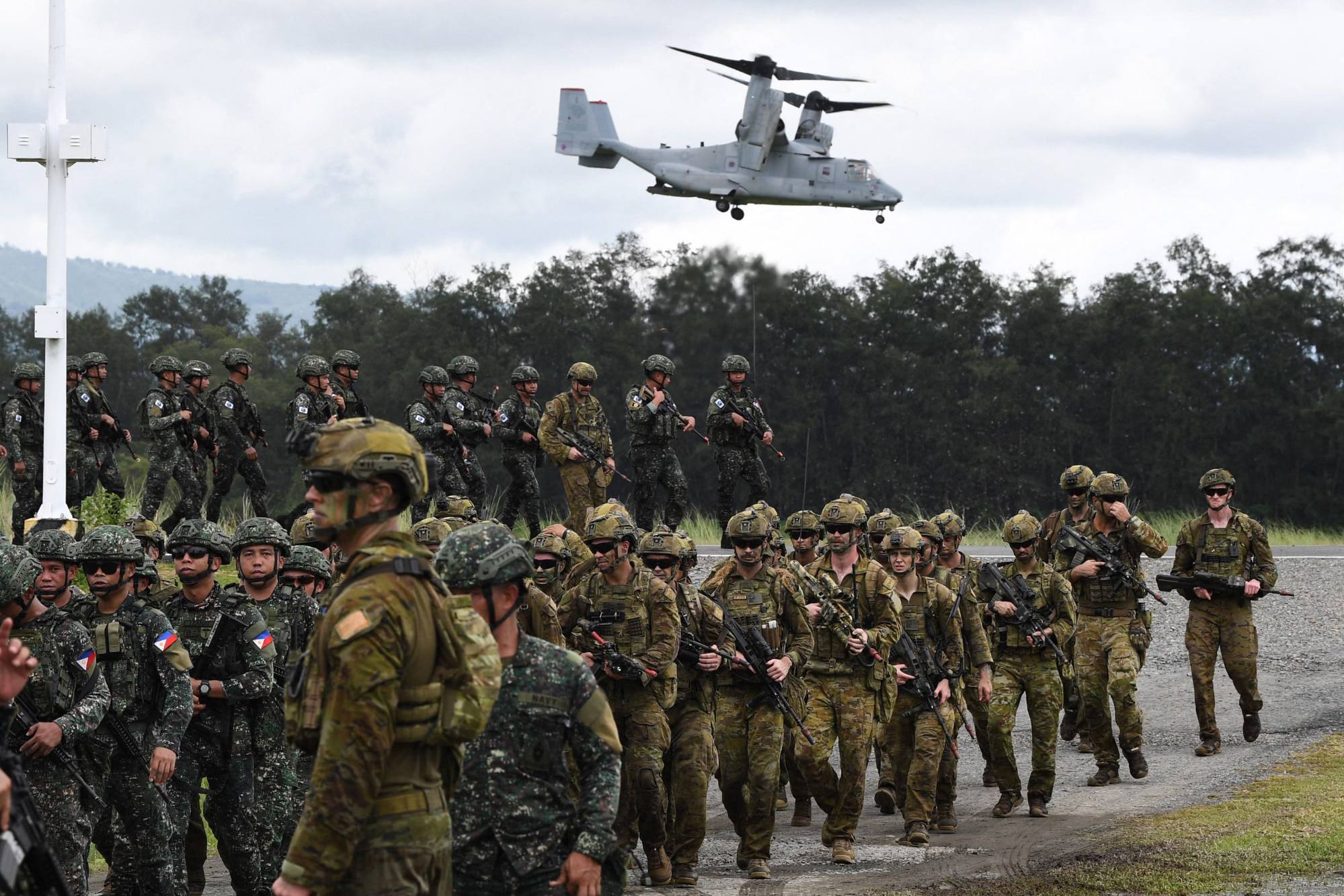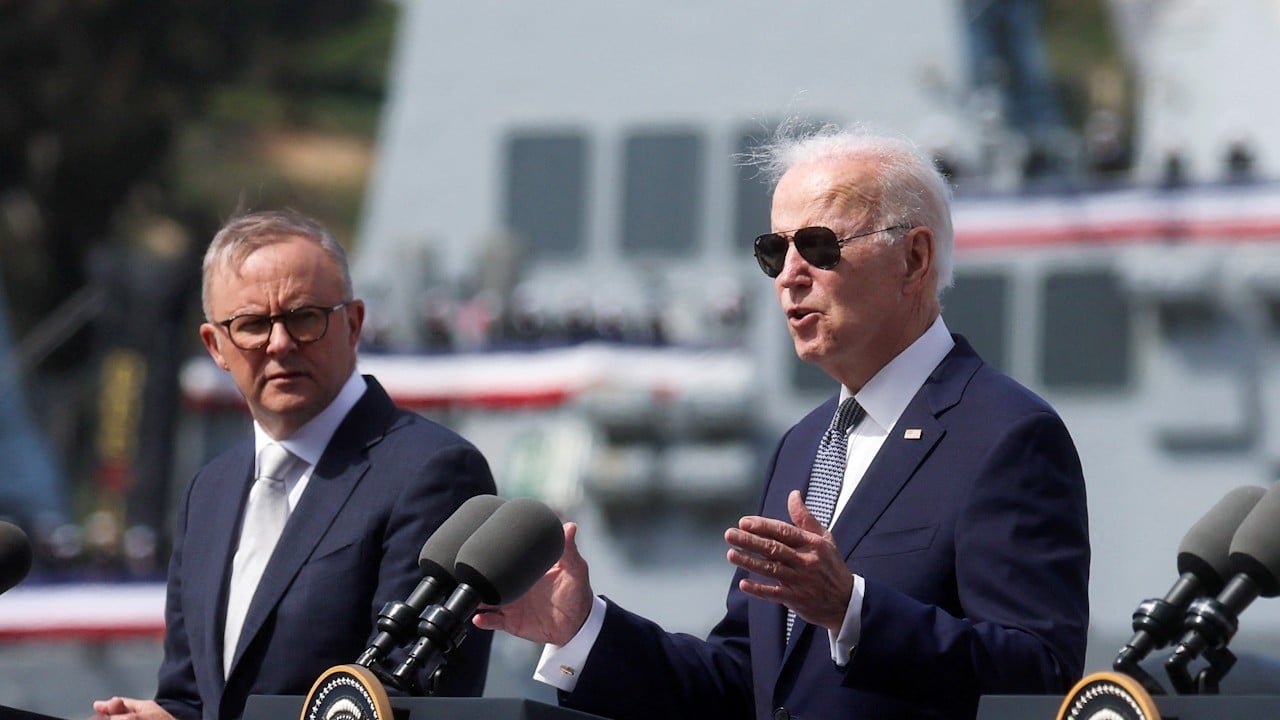
Australia puts China firmly in its sights with new defence strategy
- The 80-page document unveiled on Wednesday sets out huge increases to Australia’s defence spending and explicitly calls out ‘China’s coercive tactics’
- Defence Minister Richard Marles, presenting the text, said Australia’s ‘optimistic assumptions’ for the post-Cold War era were now ‘long gone’
The 80-page document offers a gloomy assessment of Pacific security and sets out a massive increase in defence spending to retool Australia’s military to cope.
China, Russia ‘outpacing’ US on military innovation: Australia official
“The optimistic assumptions that guided defence planning after the end of the Cold War are long gone,” said Defence Minister Richard Marles, presenting the new strategy.
Warning that “China has employed coercive tactics in pursuit of its strategic objectives”, the text describes an Australia vulnerable to foes strangling trade or preventing access to vital air and sea routes.
“We are a maritime trading island nation,” Marles said. “The invasion of Australia is an unlikely prospect in any scenario, precisely because so much damage can be done to our country by an adversary without ever having to step foot on Australian soil.”
So instead of focusing on maintaining a military that can do a range of tasks almost anywhere in the world, Marles said there would be a laser focus on building a deterrent force that can protect Australia’s interests in its immediate region.
“Having the most capable navy in our history will be at the heart of our projection and our strategy of denial,” Marles said.
The strategy boils down to making any attack against Australia’s interests prohibitively expensive and risky.
As a share of gross domestic product, defence spending is set to increase from about 2 per cent today to 2.4 per cent within a decade.
Australia no longer has the luxury of a 10-year window of strategic warning time for conflict
Still, only a modest A$5.7 billion (US$3.7 billion) of Australia’s additional outlay will be disbursed over the next four years.
That opens up the possibility of future changes to the programme and raises questions over whether Australia’s armed forces will be prepared for a conflict in an increasingly disputed region.
Over the next decade, the government will reprioritize A$72.8 billion in military spending to meet its new objectives, Marles said. At the same time, Australia will look at closing the gap in its recruitment of new soldiers by attempting to recruit non-citizens to serve the country’s military.

According to the Stockholm International Peace Research Institute, military spending in Asia and Oceania has increased 45 per cent since 2013.
Marles said that old assumptions about how much time Australia would have to prepare for war were gone.
“Australia no longer has the luxury of a 10-year window of strategic warning time for conflict” he said, upending long-held belief.
Despite the increased spending, there are still questions over whether Australia is addressing the gaps in its military capabilities, said Bec Shrimpton, director of Defence Strategy and National Security at the Australian Strategic Policy Institute.
“We’re not actually looking at getting some of the major capabilities that we’re talking about in place and having this sort of integrated force, fit for purpose, for another decade,” she said.
“And given we don’t have that decade of strategic warning any more, have we got it right?”
Additional reporting by Bloomberg

.png?itok=arIb17P0)
